
A
- Agave Nectar
- All-Natural Crunchy Peanut Butter
- Almond Flour
- Apple Cider Vinegar
- Applesauce (Unsweetened)
- Asparagus
- Avocado
B
- Bananas
- Black Pepper
- Blueberries
- Bodybuilding.com 100% Casein
- Broccoli
- Brown Rice
- BSN Syntha-6 Whey
- BSN Syntha-6 Isolate
- BSN IsoBurn
C
- Capella Flavour Drops
- Coconut (Reduced Fat Unsweetened Shredded Coconut)
- Coconut Butter
- Coconut Oil: (Extra Virgin)
- Cacao Nibs
- Cacao Powder
- Carrots
- Cauliflower
- Celery
- Collard Greens
- Chocolate PB2 and Regular PB2
- Cinnamon
- Cloves
- Coconut Flour
- Cucumber
D
E
- Eden Organic Crushed Tomatoes
- Eggs
- Egg Whites
- Enoki Mushrooms: (golden needle mushroom)
- Erythritol
- Extra Virgin Coconut Oil
- Ezekiel 4:9 Bread
F
G
- Garlic
- GG Scandinavian Bran Crispbread
- GG Bran Sprinkles
- Konjac Glucomannan Powder
- Ground Flaxseed Meal
- Ginger
- Goji Berries
- Grapefruit
- Green Tea
H
L
M
N
O
P
Q
R
S
T
U
V
W
X
Z
Agave Nectar
- Agave nectar is a commercially produced sweetener known to be considerably sweeter than sugar. It is produced from the Blue Agave, which is a large spiky plant that resembles a cactus and thrives in the volcanic soils of Southern Mexico.
- One cup of agave nectar contains roughly the same amount of calories as a cup of sugar. Agave nectar, however, is considerably sweeter than sugar, which is why you can use considerably less portions of it to achieve the desired sweetness. In fact, you can use 1/3 of a cup of agave in place of 1 cup of sugar in your dessert recipes, which will dramatically reduce your caloric intake.
- It's gluten-free and has a low glycemic index because it's mostly comprised of fructose. However, many brands of agave nectar contain fructose levels ranging from 70-97%, which is why it is being declared as “worse than high-fructose corn syrup,” which contains 55% fructose. In fact, agave nectar has the highest fructose content of any commercial sweetener (including sugar, which has 50% fructose) because it is being over-processed. Consuming large quantities of fructose increases your risk of heart disease, obesity and type 2 diabetes.
- If you do your homework, you will find agave nectars on the market that are processed below 118 degrees F, contain no artificial fillers, contain less than 50% fructose and have a low glycemic index. An example of one such product is Volcanic Nectars Blue Agave Nectar. But remember that Volcanic Nectar Agave is still a sugar and needs to be consumed in moderation.
- For more information, please read my article, Agave Nectar: Sweet or Dangerous.
All-Natural Crunchy Peanut Butter
- Unlike regular peanut butter, all natural peanut butter does not contain hydrogenated fats, trans fats, sugar or salt. It is made solely with peanuts!
- A freshly opened jar contains a layer of oil on top: store the jar upside down in your pantry to keep the oil at the bottom.
- Stir to blend the oil with the rest of the butter before serving.
- Almond flour/meal is ground from whole, blanched sweet almonds.
- Adding almond meal to your baking brings the health benefits of almonds to your diet
- It’s low carb
- It’s gluten free
- Store it in the fridge or freezer.
- Use it for baking (pie crusts, cakes, cookies, pancakes, quick breads) and for cooking (use it instead of bread crumbs).
- Crushing apples makes apple cider vinegar. The resulting liquid is combined with bacteria and yeast to initiate the alcohol fermentation process. Sugars are converted into alcohol, which then undergoes further fermentation and is converted into vinegar by acetic acid-forming bacteria. The main ingredient in apple cider vinegar is acetic acid, which is responsible for its bitter taste. It also contains vitamins, minerals and amino acids. Did you know it is also provides a source of phosphorus, calcium, sodium, potassium, iron, magnesium, chlorine and B-vitamins? Perhaps you have used this ancient folk remedy as a salad dressing. With recent studies suggesting apple cider vinegar could help with several conditions including diabetes and obesity, it has gained popularity and is even being sold as pills. Although the findings sound promising, more studies will need to be conducted on apple cider vinegar to establish if it actually does offer any health benefits.
- You may have noticed apple cider vinegar in the weight loss supplement aisle. Vinegar has been purported to enable weight loss for thousands of years. One possible theory is that it prolongs the sensation of satiety after eating. A 2009 study on mice showed that acetic acid (the main ingredient in apple cider vinegar) increases the rate of gene expression for fatty acid oxidation enzymes in the liver, which suppresses body fat accumulation. Other theories suggest that apple cider vinegar prevents weight gain by facilitating digestion, increasing the rate of gastric emptying and aiding in energy release. At the current time, there is no conclusive evidence supporting the claim that apple cider vinegar is effective for weight reduction or maintenance.
- What is the recommended dosage? There are no official recommendations. Commonly used dosages include:
- Two teaspoons a day (mixed in a cup of water).
- One 285 mg tablet.
Apple cider vinegar tablets are not regulated by the FDA, which means the vinegar content can vary dramatically from brand to brand.
- Are there any risks? The risks associated with occasional intake of small quantities of apple cider vinegar are low. However, long-term intake of apple cider vinegar in high dosages is associated with the following risks:
- Lowered potassium levels.
- Lowered bone density (osteoporosis)
- Altered insulin levels (apple cider vinegar contains chromium which can alter insulin levels. Diabetics should consult with their physician before using apple cider vinegar).
- Pure apple cider vinegar is highly acidic (its main ingredient is acetic acid) and can damage tooth enamel and burn the tissues in your mouth, throat and esophagus. Always dilute it with water before consuming it. One website recommended you should scrub your teeth with apple cider vinegar to break up stains on your teeth. DO NOT do this unless you want to erode away your tooth enamel!
- Drug interactions: Apple cider vinegar may interact with medications such as diuretics, laxatives, and medications for diabetes and heart disease.
- Should we be consuming apple cider vinegar? Consuming it as a salad dressing should be fine. Taking it as a daily medical treatment may be risky. At the present time there is not enough evidence indicating that apple cider vinegar has any health benefit for any condition. Always consult with your physician. Always dilute it with water before consuming it (2 teaspoons a day mixed in a cup of water). I enjoy consuming it as a salad dressing.
- Use unsweetened applesauce instead of vegetable oil and sugar when you are baking. This is a great way to cut fat, sugar and calories without losing all the taste! If the recipe called for 1/2 cup of oil, then use 1/2 cup of unsweetened applesauce instead.
Asparagus:
- Asparagus is chock full of fiber, which helps promote a sense of fullness. This makes it a great food to include in your weight loss program.
- Asparagus contains asparigine, which is a natural diuretic that helps flush excess fluids and waste from the body. So if you want to prevent water weight gain (bloating), then eat asparagus.
- Asparagus contains inulin, which stimulates healthy bacteria in the large intestine, facilitating digestion.
Avocado:
- Avocado are a good source of fiber, potassium, and vitamins C, K, folate, lutein, and B6. Note that a higher folate intake is associated with a lower risk of heart disease1.
- Avocado can help you lose weight: Half an avocado contains ~5 grams of fiber (soluble and insoluble: which keeps your digestive system running smoothly). Furthermore, soluble fibre slows the breakdown of carbohydrates in your body, helping you feel full for longer1.
- Avocados also contain oleic acid, a fat that activates the part of your brain that makes you feel full. The oleic acid in avocados also helps lower LDL (bad) cholesterol levels1.
- Avocado can help stabilize blood sugar! Loaded with beneficial monounsaturated fat, avocado slows digestion and helps keep blood sugar from spiking after a meal. A diet high in good fats may even help reverse insulin resistance, which translates to steadier blood glucose levels1.
- Try putting mashed avocado on sandwiches instead of mayonnaise or butter1.
- Prevent your leftover avocado from turning brown by spritzing the flesh with lemon juice. Then wrap it in plastic1.
- An avocado contains ~22 g of healthy fats, 3 g of protein, 13 grams of carbs (of which 10 g are fiber!). The 1 g of sugar it contains, mannoheptulose, has a unique chemical structure that actually helps clear glucose from the blood. Rats fed a concentrated form as part of a study became more insulin sensitive and lived 30% longer than the control rats.2
Bananas:
- Loaded with potassium, fibre, and vitamins B6 and C!
- This is a creamy and sweet bean
- Antioxidant pigments called carotenoids give them their deep color.
- Rich in healthy fiber and a good source of protein, iron, and magnesium.
- Gluten free
- I like the Eden Organic brand because no salt is added and they are packed into cans with BPA-free linings.
- You can substitute flour in your brownies & cookies recipes with black bean puree. If your recipe calls for 1/2 cup of flour, then use 1/2 cup of black bean puree instead.
- Black pepper contains piperine, which has been shown to boost thermogenesis by stimulating the nervous system.
- Did you know that blueberries have 40% more antioxidant capacity than strawberries?
- They are packed with immune-boosting vitamin C, as well as and phytonutrients called anthocyanins, which lower your risk of heart disease and cancer.
- Blueberries also possess anti-inflammatory properties, and as we know, inflammation is a key contributor to chronic diseases.
- Casein protein digests SLOWLY, providing a slow-release amino stream for an 8 hour period. This means it can be used to help repair muscle and prevent muscle breakdown while you sleep for 8 hours. Therefore, the optimal time to take it would be before bed.
- Casein protein is extracted from milk.
- If you have a milk allergy, then avoid casein.
- Someone who is allergic to casein is not necessarily allergic to lactose.
- Someone who is lactose intolerant is not necessarily intolerant of casein, meaning, if you are lactose intolerant, you can consume casein protein.
- If you are allergic to casein, then substitute the casein protein with a whey protein isolate.
- If you are lactose-intolerant, then purchase a whey protein isolate that is labelled 100% lactose-free.
- Please note that this specific product is not gluten-free.
- Did you know that this cruciferous vegetable contains more calcium than a glass of milk?
- Not only does 1 cup of broccoli provide you with the recommended dietary allowance of immune-supportive vitamin C, but it also contains high levels of folic acid, calcium, vitamin K and B6, potassium, lutein and vitamin A (beta-carotene).
- Broccoli is a cruciferous vegetable. Do not overcook cruciferous vegetables as it will produce a strong unappealing sulfur odour. Eat your cruciferous vegetables either raw or lightly steamed. This ensures you will retain their phytochemicals and disease-preventing effects.
- Brown rice still has the bran intact, so it has more fiber than white rice.
- It also contains more nutrients (magnesium, manganese, selenium and zinc) than white rice.
- And lastly, brown rice releases sugars more slowly into your blood stream than white rice, which helps minimize fat storage.
- It is also a better option for those who have diabetes or who want to prevent it
BSN PROTEIN POWDERS:
BSN Syntha-6 Whey
"SYNTHA-6™ is an ultra-premium lean muscle protein powder, BSN's best-tasting protein supplement on the market. Its formula features multiple quality proteins resulting in a nutritious and multi-functional protein supplement that ensures an athlete's muscles a quality supply of protein building blocks."
==> It's a Protein Matrix Comprised Of Whey Protein Concentrate, Whey Protein Isolate, Calcium Caseinate, Micellar Casein, Milk Protein Isolate, Egg Albumin, And Glutamine Peptides.
BSN Syntha-6 Isolate
This is BSN's 100% Isolate Protein Matrix. It is comprised entirely of isolate sources that deliver a moderately-paced release of amino acids!
"SYNTHA-6™ ISOLATE is BSN®'s latest ultra-premium protein powder, made with 100% isolate protein sources. A 50/50 blend of whey protein isolate and milk protein isolate (a high-quality source of slow-digesting casein), the formula's unique ISOLAST™ protein matrix delivers a mix of fast- and slow-release proteins that promotes a moderately-paced release of amino acids to fuel active muscles. Drinking SYNTHA-6™ ISOLATE provides the fast-releasing benefits of whey isolate and the prolonged amino acid release of casein for the ultimate post-workout recovery shake. And because it's BSN®, the rich and satisfying taste is unmatched by any other protein supplement, despite having less than half the fat and carbs of original SYNTHA-6™."
Summary ==> It has a relatively low calorie count and a multi-functional blend of fast- (whey protein isolate) and slow-release (milk protein isolate) protein sources.
BSN IsoBurn
- This is BSN's fat burning protein powder matrix, which has been developed to help support your fat-burning potential
- Each serving has 20 grams of 100% Whey Protein Isolate along with a powerful blend of Green Coffee Extract, L-Carnitine and Lipticore.
- Green Coffee Extract: may support fat-burning and weight management.
- L-Carnitine: may help support fat-burning by facilitating the transfer of fatty acids into the mitochondria and by promoting fat oxidation for energy production.
- Lepticore: helps promote healthy weight management.
- It's stimulant free
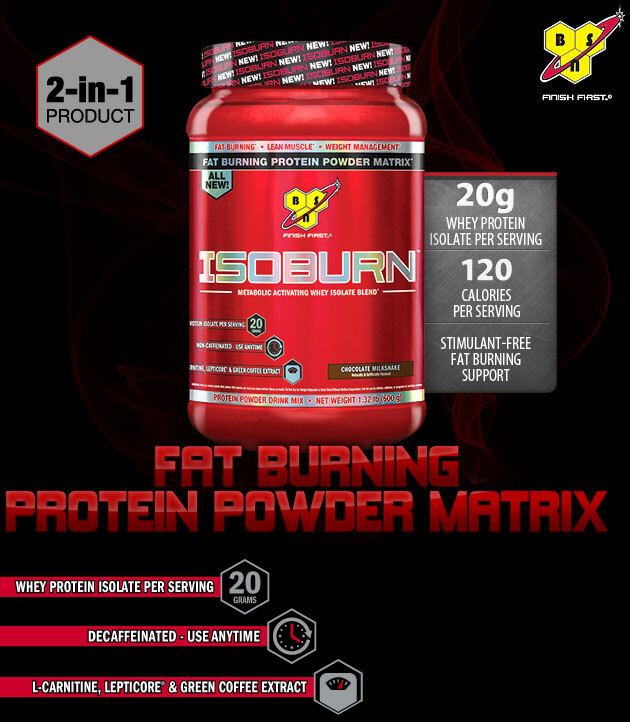
- Capella Flavour Drops are a highly concentrated flavouring without any sugar, sweeteners, fats, calories, or sodium.
- All Flavor Drops are corn and peanut derivative free. Gluten free. Vegan Friendly.
- They are calorie free.
Coconut (Reduced Fat Unsweetened Shredded Coconut):
- No added sugar
- No preservatives
- Contributes fiber, protein, beneficial fats and flavor to your recipes
- This version contains 40% less than regular coconut
- Coconut butter is freshly made from whole coconut flesh (not just the oil) and puree’d into a fiberous, densely nutritious & creamy spread.
- You can use it as a dairy butter substitute in recipes.
- It hardens when you place it in the fridge/freezer It imparts a rich and creamy texture to fudge. Yes, use it to make FUDGE! And icing too!
Coconut Oil: (Extra Virgin)
- Coconut oil, known for its high levels of saturated fat, has a reputation for years for raising cholesterol and increasing your risk of heart disease. This theory; however, is now being revisited. Is coconut oil the exception? Is coconut oil a healthy saturated fat?
- Coconut oil, which is popular amongst vegans, is a vegetable fat that is solid at room temperature. It has a sweet coconut flavour, which makes it a great ingredient for baked goods and sautés1. I use it in my skillet to sauté my chicken, shrimp, scallops, and egg-white omelets, to roast my sweet potatoes in the oven, and to make chocolate protein powder fudge! You can even use it in your smoothies, on your salads or on your popcorn.
- It is heat stable, which is why it is well suited for cooking food at high temperatures1. In fact, it is the only oil that is stable enough to resist heat-induced damage.2 Frying oxidizes oils such as extra virgin olive oil and canola oil2. Vegetable oils such as corn oil, sunflower oil and canola oil are omega-6 vegetable oils. Not only do they contribute to the undesirable imbalance of the omega-6 to 3 ratio, but they also generate toxic chemicals when fried2.
- From where does coconut oil’s stigma arise? Apparently studies involving coconut oil were performed using partially hydrogenated coconut oil1. As we know, partial hydrogenation generates dangerous trans fats while destroying many essential fatty acids and antioxidants naturally present in the virgin coconut oil1. Extra virgin coconut oil, however, is not chemically treated. Furthermore, not all saturated fats are villains. In fact, medium chain fatty acids, which are found in coconut oil mainly as lauric acid, are linked to increased levels of HDL “good” cholesterol1 and other health benefits such as increased thermogenesis, weight loss and immunity2. Unlike long chain fatty acids which are predominantly stored as fat, medium chain fatty acids are thought to be health-promoting because they are sent directly to the liver to be burned for energy rather than being stored as fat2. At this time, there is no concrete scientific evidence supporting the health benefits of coconut oil1.
- Nevertheless, a dentist named Dr. Weston Price examined traditional diets in the South Pacific in the 1930s and their effect on dental and total body health. His findings revealed that those who ate diets high in coconut products were lean and healthy.2 Similarly, a 1981 study published in the American Journal of Clinical Nutrition on the effects of a coconut-based diet among 2 Polynesian populations demonstrated positive vascular health in both groups.
- Conclusion: Although coconut oil is 90% saturated fat, it has been established that not all saturated fat is created equal. Always consult with your physician before adding extra virgin coconut oil to your diet.
- Cacao beans are the source for all cocoa and chocolate products.
- Unlike processed dark chocolate, the antioxidants are preserved in raw cacao, which is why they have more antioxidant flavonoids than blueberries, red wine and green tea.
- They are also high in fiber.
- Cacao contains magnesium, theobromine (natural stimulant) and anandamide (endorphin) which stimulate your metabolism.
- Loaded with fibre, magnesium and iron
- It contains more antioxidant flavonoids than red wine or green tea, and phytochemicals (theobromine and anandamine) that boost your mood and energy.
- Unsweetened cocoa powder tastes very bitter and rich.
- To get cocoa powder from the cacao bean: the cacao nibs are ground into a paste. The fat is removed, and the remaining solids are ground into a fine dust (cocoa powder).
- Cocoa contains:
- serotonin and dopamine: antidepressant compounds
- phenylethylamine: produces the same brain chemistry as falling in love
- polphenols (antioxidants): provide cardiovascular and metabolic health benefits
- Several studies suggest cocoa-derived polyphenols reduce blood pressure, improve insulin sensitivity, raise HDL (good) cholesterol and reduce the risk of blood clotting.
- Dark chocolate also provides these health benefits. The darker the chocolate the better because darker is lower in fat and sugar and is closest to the pure source of cacao beans. Be sure to purchase dark chocolate that has at least 70% cocoa solids to get the heart healthy benefits. The serving recommendation is 1 ounce of dark chocolate 2-3 times a week. Do not consume dark chocolate with milk because the health benefits of dark chocolate are negated when consumed with milk. Have you tried 99% dark chocolate yet?
Carrots:
- Excellent source of vitamin A (just one carrot provides more than 200% of your daily requirement).
- Loaded with beta-carotene, a compound that is naturally converted to vitamin A when eaten.
- Although carrots rank high on the glycemic index, the amount of carbohydrates actually consumed in a normal serving of carrots is pretty low (they have a low glycemic load). The low-carb folks tell people to avoid carrots (and pumpkin), but unless you eat huge portions of them, carrots will not disturb your blood sugar very much, and they provide important phytonutrients.
Cauliflower:
- Good source of fiber, vitamin C and folate.
- Rife with cancer-fighting phytochemicals.
- Supplies vitamin A, calcium, selenium and potassium.
Celery:
- Not only is celery high in filling fiber, but it is also low in calories and extremely portable. Celery is frequently touted as a “negative calorie food”, which would mean you would burn more calories than the celery actually contains just by chewing, swallowing, digesting and eliminating it. According to Nancy Snyderman, MD (medical editor of NBC News), the calories burned in the total digestion process of celery are negligible.
- Regardless of what you believe about celery, there is no denying it is a very filling and nutrient-packed low-calorie vegetable that is wiser to eat than the physique-sabotaging foods you are trying to avoid.
Collard Greens:
- Collard greens provide a good source of vitamin C, soluble fiber and anticancer nutrients (diindolymethane1 and sulforaphane).
- 100g (~4 cups) of collards contain 46 calories.
- Fresh collard leaves can be refrigerated for up to 3 days. Cooked collard; however, can be frozen and stored for greater lengths of time.
It’s no secret that peanut butter is high in fat calories. If you are a peanut butter addict and have a hard time exercising portion control, then PB2 Powdered Peanut Butter is for you!
- PB2 has the same consistency and taste as full fat peanut butter, minus the guilt!
- PB2 has nearly 85% less fat calories than conventional peanut butter!
- PB2 is made with high quality peanuts that are slow-roasted and pressed to remove the oil.
- PB2 is all natural with no artificial flavours, sweeteners, or preservatives.
- PB2 Powdered Peanut Butter is mixed with water to create a traditional peanut butter mixture.
- PB2 can be used as a substitute for peanut butter in recipes.
- Ingredients: Roasted Peanuts, salt, and sugar.
- PB2 Nutritional Information: 2 TBSP: 45 calories, 1.5 g of fat, 94 mg sodium, 5 g of carbohydrates, 2 g of fiber, 1 g of sugar and 5 g of protein.
- Chocolate PB2 Nutritional Information: 2 TBSP: 45 calories, 1 g of fat, 70 mg sodium, 6 g of carbohydrates, 1 g of fiber, 3 g of sugar and 5 g of protein.
- Compare these values to 2 TBSP of all-natural peanut butter: 180 calories, 16 g fat, 0 mg sodium, 6 g carbohydrates, 2 g fiber, 2 g of sugar and 8 g of protein. NO CONTEST!
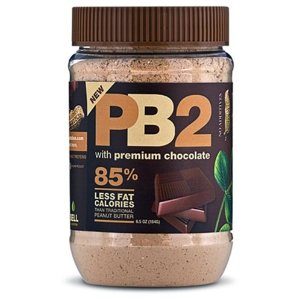
- Several studies suggest that cinnamon can lower “bad” LDL cholesterol and regulate blood sugar levels.
- Seasoning a high glycemic carboydrate food with cinnamon can lessen its impact on your blood sugar levels.
- Cinnamon also has one of the highest antioxidant levels of all the herbs and spices.
- Did you know clove oil applied to a dental cavity can relieve toothache?
- Great alternative to wheat
- It’s ground from dried, defatted coconut meat
- It’s high in fiber and low carb
- It’s gluten free
- Coconut flour requires an equal ratio of liquid to flour for best results
- Coconut flour can replace up to 20% of the flour in a recipe
- Store it in an airtight container in the fridge or freezer to keep it fresh after opening.
Cucumber:
- Cucumbers are 95% water.
- The low calorie and high water content of cucumbers make them ideal for people trying to lose weight.
Daiya Dairy Free Cream Cheese:
- Free of dairy (casein, whey & lactose), soy, gluten, eggs, peanuts and tree nuts
- Cholesterol free Trans fat free Vegan, Kosher
- No artificial ingredients, no preservatives, no hormones, no antibiotics
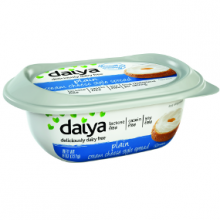
Daiya Vegan Cheese (cheddar style shreds)
- Free of dairy (casein, whey and lactose), soy, gluten, eggs, rice, peanuts and tree nuts (except coconut oil).
- It is also cholesterol & trans-fat free and contains no preservatives.
Eden Organic Crushed Tomatoes:
- Made from Roma tomatoes (which are oblong, firm, plum tomatoes). They make the best spaghetti sauce.
- No salt added, kosher
- Crushed Tomatoes are fat free, sodium free, and a good source of the antioxidant vitamins A and C.
- Good source of lycopene (antioxidant). Research shows cooked tomatoes are the best source of lycopene. Cooking with a bit of oil, increases lycopene absorption.
- Very low carb and very low sugar
Eggs:
- Please read my article about eggs published on Bodybuilding.com
Egg Whites
- Cholesterol free
- High in Protein
- Low Calorie
Enoki Mushrooms: (golden needle mushroom)
- A long thin white mushroom
- You want fresh enoki specimens with firm, white, shiny caps, rather than those with slimy or brownish stalks
- The mushroom has a crisp texture and can be refrigerated for approximately one week. (store in a plastic bag in the fridge)
- Contains antioxidants
- Taste best eaten raw
- If you cook them, use low heat & don’t let them cook for more than 5 minutes
- Erythritol is a naturally-occurring sugar alcohol, but it is different from other sugar alcohols in that it does not upset stomachs!
- It’s derived from a corn source and is naturally found in trace amounts in various plants, fruits and mushrooms.
- It’s virtually calorie free (95% less calories than table sugar)
- It has a low glycemic impact
- It doesn’t contribute to tooth decay.
- It tastes just like sugar and is about 70% as sweet.
- Extra Virgin Coconut Oil: A Heathy Saturated Fat: Coconut oil, which is popular amongst vegans, is a vegetable fat that is solid at room temperature. It has a sweet coconut flavour, which makes it a great ingredient for baked goods and sautés. It is heat stable, which is why it is well suited for cooking food at high temperatures. In fact, it is the only oil that is stable enough to resist heat-induced damage. Frying oxidizes oils such as extra virgin olive oil and canola oil Vegetable oils such as corn oil, sunflower oil and canola oil are omega-6 vegetable oils. Not only do they contribute to the undesirable imbalance of the omega-6 to 3 ratio, but they also generate toxic chemicals when fried. Not all saturated fats are villains. In fact, medium chain fatty acids, which are found in coconut oil mainly as lauric acid, are linked to increased levels of HDL “good” cholesterol1 and may possibly offer other health benefits such as increased thermogenesis and weight loss. Unlike long chain fatty acids which are predominantly stored as fat, medium chain fatty acids are thought to be health-promoting because they are sent directly to the liver to be burned for energy rather than being stored as fat. Always consult with your physician before adding extra virgin coconut oil to your diet.
- Please read my article, “What is Extra Virgin Coconut Oil?” for more information
- It is made from freshly sprouted organically grown whole grains. The sprouting process releases vitamins and minerals stored in the whole grains. It also increases the protein content and decreases the calories and carbohydrates found in the original grain.
- It is flourless
- It is a complete protein
- It is high in fiber
- It is not gluten-free, but the sprouting process converts the gluten to a more digestable (tolerable) state. In fact, many people with gluten senstivities are able to consume sprouted products without any adverse reactions.
- It is lower on the glycemic index, and is therefore a better choice than bread made with refined flour for type 2 diabetics and for people trying to lose weight.
- Ingredients: Organic Sprouted Wheat, Malted Barley, Organic Sprouted Millet, Organic Sprouted Barley, Organic Sprouted Lentils, Organic Sprouted Soybeans, Organic Sprouted Spelt, Filtered Water, Fresh Yeast, Sea Salt
- Ezekiel 4:9 bread is found in the freezer section of your grocery store.
- Sugar free
- high in fibre
- Helps promote digestion
- Keeps you regular
Garlic:
- The health benefits of garlic have been touted for centuries.
- It has been used to lower blood pressure and cholesterol, prevent cancer, and even as an anti-batcterial, anti-fungal and anti-viral agent.
- One clove of garlic provides vitamins A, B, C, selenium, iodine, potassium, iron, calcium, zinc and magnesium.
- Tests have revealed that raw garlic can detoxify the body by increasing antioxidant levels.
GG Scandinavian Bran Crispbread
- Not only does dietary fibre alleviate constipation, but it is also a beneficial part of a weight loss regime. As fibre passes through the digestive system, it absorbs water and swells like a sponge. Since the fibre is so filling, it decreases appetite, causing us to eat less. Weight loss is further enhanced because the calories locked in the fiber cannot be released by human digestion.
- This crispbread is from Norway, and is prepared from 85% unprocessed bran, with rye flour and water.
- When you eat GG Scandinavian Bran Crispbread, it quickly absorbs more moisture and satisfies your appetite.
- It boasts the lowest in calories (25 calories a slice) and net carbs (3.5 g per slice) of any bread product on the market.*
- Ingredients: unprocessed wheat bran, rye flour, salt (salt content 0.4%)
- Note: not gluten free
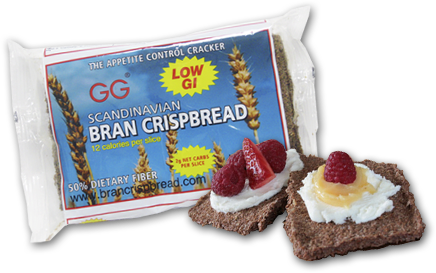
Note: American shoppers can get it here. Canadian shoppers can get it here.
- This is a flaked form of GG Bran Crispbread
- 3 TBSP provides 5 g dietary fiber and is only 12 calories and 2g net carbs
- They boast a low GI. Perfect for diabetics and dieters.
- Note: these are not gluten free.
Konjac glucomannan is a water-soluble dietary fiber derived from the root of the Konjac plant. When glucomannan powder is mixed with water, it forms an extremely viscous solution. In fact, it has the highest water holding capacity of any soluble fiber – up to 100 times its own water weight!
Dietary soluble fiber can lower blood cholesterol. Foods high in soluble fiber help prevent your blood sugar levels from rising too high after meals by keeping food in the stomach longer. Soluble fiber does the following:
- It binds to fat in the intestines, preventing some fat absorption.
- It dissolves fluids in the large intestine and forms a gel that binds with bile acids in the intestines. As a result, the liver converts more cholesterol to bile acids, and blood cholesterol levels are reduced.
- It slows digestion and the absorption of nutrients, resulting in a slow and steady release of glucose from accompanying carbohydrates. (great for type 2 diabetics)
- It soaks up excess bile acids found in the intestinal tract - the same acids that are converted into blood cholesterol.
- It delays stomach emptying, triggering satiety (a feeling of fullness) that can be helpful in people with type 2 diabetes trying to achieve weight loss goals.
Glucomannan Powder contains zero net carbohydrates, zero calories, no fat, no sugar, no starch and no protein. It's wheat and gluten free, pure vegetable, do not require refrigeration, organic and flavourless (but absorb the flavours of your food).
How to use Glucomannan Powder:
- Drink 1 tsp of it with 1 cup of water 3 times a day (before your meals). Drink it immediately before it begins to gel.
- Use it as a thickening agent. It can be used to thicken sauces, gravies, puddings and pie fillings without affecting taste. It dissolves into hot or cold liquids.
- Most know for it’s omega-3 essential fatty acids (good fats), lignans (estrogen-like chemicals that act like antioxidants)and fiber
- It’s a “powerful natural cholesterol controller”
- Provides a nutty flavour to bread, pancakes, muffins, bars and cookies.
- You can use it as an egg replacer in recipes for muffins, cakes, cookies and pancakes. Replace one egg with 1 TBSP flaxseed meal and 3 TBSP water.
- You can reduce the flour in a recipe by 25% and replace it with ground flaxseed.
- Best stored in the fridge after opening.
- Flaxseeds contains soluble and insoluble fiber, as well as mucilage. Not only does mucilage help protect against bowel cancer, but it also helps stabilize your blood sugar. And fiber, as you know, helps relieve constipation. Ground flaxseed expands up to 5 times when ingested, which means 1 tablespoon added to your morning oats or protein shake will be enough to help you feel full all morning!
- Note that flaxseeds must be ground in order to be absorbed. Store them in the refrigerator in an airtight container to extend their freshness (they will stay fresh for 3 months).
- Flaxseeds also contain lignans, which possess anti-cancer, anti-viral, anti-bacterial and antioxidant properties.
- Did you know ginger can help reduce flatulence and nausea?
- This Himalayan berry is a small red fruit that resembles a raisin and has been used in Chinese medicine for over 2000 years. It's also referred to as the Wolfberry.
- It has a low glycemic index (GI = 29)
- The goji berry is a complete source of protein containing all the essential amino acids, which is uncharacteristic for a fruit. It's also chock full of antioxidants (which help reduce the risk of cancer) and essential fatty acids.
- Goji berries are high in fibre, beta-carotene, vitamin C and iron.
Grapefruit:
- Provides an abundant source of pectin. Pectin, which is a type of fiber, helps curb your appetite by making you feel fuller, longer.
- Drink green tea because of its health benefits ranging from its potential to fight cancer and heart disease, lower “bad” (LDL) cholesterol, burn fat, prevent diabetes and stroke, and even ward off dementia.
- Green tea contains antioxidants (catechins) that scavenge for free radicals. Free radicals can damage DNA and contribute to cancer. In fact a few studies have shown drinking 2 cups of green tea a day inhibits cancer growth.
- Black, white and green tea all contain protective antioxidants; however, green tea also contains EGCG, which assists with fat and weight loss.
- Peppers, especially chili peppers, contain capsaicinoids. High levels of capsaicinoids are responsible for the anti-inflammatory, analgesic, anti-cancer and heart-healthy effects of hot peppers.
- Chili peppers contain the following antioxidants: carotenes, flavonoids and twice the amount of vitamin C that is found in citrus fruits.
- Did you know that chili peppers speed up your metabolism and increase fat burning? Capsaicin, the active ingredient in chili peppers responsible for that notorious inferno effect in your mouth, can induce thermogenesis and increase body temperature. By incorporating hot peppers into your meals, you will be able to rev your metabolism and increase fat burning.
- Lo han guo is a great zero calorie sweetener for diabetics or for anyone who wants to reduce their sugar intake. Try using Lo han guo in your baking as a sugar substitute.
- Lo han guo is an exotic fruit extract that has been commercially available since the mid 1990’s. This extract has zero calories and zero glycemic impact, making it safe for diabetics and hypoglycemics to use.
- Lo han guo is a round green fruit (Siraitia grosvenori) that belongs to the Curcubitaceae family, along with the cucumber, melon, squash and gourd. It grows in warm, humid and shady areas in southern China, mainly in the Guangxi Province. Lo han guo is seldom eaten fresh because it is difficult to store and it quickly ferments, creating unpleasant flavours.
- The sweet taste of lo han guo is attributed to the mogrosides, which are a group of terpene glycosides known to be 250 times sweeter than sucrose.
- A process for isolating the sweet components of the fruit (mogrosides) and eliminating the undesired flavours was patented in 1995 by the Proctor and Gamble Company. The resulting luo han guo extract was a neutral tasting sweetener that was granted “Generally Regarded as Safe” status by the US FDA in 1997. You may have even noticed it in your foods and supplements, including Quest Nutrition Bars.
- A 2008 study published in Nutrition Research by Xiang-Yang Qi. et al. demonstrated the positive impact the mogrosides extract had on the health of diabetic mice. When the extract was administered for 4 weeks, a decrease in the mice’s blood sugar, total cholesterol and trigycerides was noted, along with an increase in HDL (“good”) cholesterol. It was concluded that the extract may have the capacity to inhibit hyperglycemia induced by diabetes, and the data suggests it may be helpful in the prevention of diabetic complications associated with oxidative stress and hyperlipidemia. But the question remains, will the results found in the mice apply to humans?
- Nutritional Facts for Lo Han: NuNaturals Lo Han Supreme:
- Per 10 drops: Calories 0, Fat 0g, Saturated Fat 0g, TransFat 0g, Cholesterol 0mg, Sodium 0mg, Carbohydrate 0g, Fiber 0g, Sugar 0g, Protein 0g
- 10 drops are about as sweet as 1 tsp of sugar.
- Why add lemon juice to cheesecake recipes? The acid in the lemon juice react with the proteins, fats and sugars in the cheesecake filling to make it a thicker mixture.
- Many people drink green tea to obtain the health benefits of its most potent catechin called epigallocatechin gallate (EGCG).
- But did you know a 2003 University of Colorado study confirmed that drinking 1 cup of matcha green tea has 137 times the amount of antioxidant EGCG compared to a conventional cup of green tea? This means you would have to drink 10 cups of regular green tea to receive the same amount of antioxidants found in just 1 cup of matcha green tea. Why? The reason is that the entire leaf is dissolved in water and consumed, rather than steeping the tea and subsequently throwing away the leaves. This means the whole leaf is consumed, along with its health benefits.
- Drinking matcha green tea can prevent body fat accumulation and promote weight loss. A 1999 study featured in the American Journal of Clinical Nutrition demonstrated that green tea extract rich in catechins has thermogenic properties and promotes fat oxidation beyond that explained by the tea’s caffeine content. It was found that consuming green tea increased thermogenesis (the body’s rate of burning calories) from 8-10% to 35-43% of daily energy expenditure.
- Another study demonstrated that exercising immediately after drinking matcha green tea resulted in 25% more fat burning during exercise. Both studies suggest matcha green tea can enhance both resting metabolic rate and fat burning, making it a useful addition to any weight loss program.
- good source of vitamins A, C & B2
- good source of dietary fibre
- good source of folate, iron, magnesium, manganese
- low in calories
- What is Miracle Rice and Miracle Noodles? Click to read all about it in my post, “Zero Calorie Pasta“.
-
- calorie free
- carbohydrate free
- gluten free & wheat free
- kosher
- made of a healthy natural soluble fiber called Glucomannan
- soluble fiber is known to lower cholesterol
- Foods high in soluble fiber help prevent your blood sugar levels from rising too high after meals by keeping food in the stomach longer.
- beneficial effects backed by medical studies for type II diabetes, constipation, obesity and cholesterol
- easily absorbs the flavours of any soup, dish or sauce
- no fat, no sugar, no starch
- are instant and come in a variety of styles
- eat them to stay thin!
- Miracle Noodles need not be stored in the fridge: Shelf life: 6-10 months refrigerated, 4 months in the pantry.
- Salt-free seasoning blend
- All Natural
- No MSG
- Koser
Mushrooms:
- The difference between white button, cremini and portobello mushrooms is just age!
- The portobello mushroom is merely an overgrown white button mushroom, meaning it is permitted to grow for a longer period of time!
- White button mushrooms are the youngest, portobello are the oldest, and cremini mushrooms are “in between” these 2 varieties.
- Loaded with disease-fighting phytochemicals.
- Mushrooms retain their nutrients when stir fried, grilled or microwaved!
- Packed with selenium and potassium.
- Low in calories.
- Did you know? Nutmeg is purported to:
- helps you sleep
- sooth your stomach: it can help regulate your GI tract
- helps relieve tooth pain (Nutmeg oil has eugenol, which brings relief from toothache)
- helps increase sexual desire
- Nutritional yeast, not to be confused with Brewer’s yeast, is an inactive yeast popular amongst vegans because of its cheesy flavour when added to foods.
- Not only does it provide an excellent source of protein and B-vitamins, but it is also low in fat and sodium.
- It can be purchased as flakes or as a yellow powder. Try adding it to your egg white omelettes!
- 1 TBSP has 20 calories, 0g fat, 0g sodium, 2g carbohydrates, 1g fibre, 3g protein
Reasons why you should eat oats:
- Oats are a complex carbohydrate. Their high water-soluble fiber content encourages slow digestion and stabilizes blood-glucose levels. This provides you with a steady supply of energy, prevents insulin spiking and fat storage and even reduces the risk of type 2 diabetes.
- Oats can lower blood cholesterol levels and reduce the risk of heart disease.
- Oats can reduce high blood pressure because of its soluble fiber content.
- Because of the high soluble fiber content of oats, eating them will make you feel fuller longer, which makes you less likely to eat extra calories between meals. This will help you lose weight.
- Oats are inexpensive and easy to prepare
- Oats are a good source of lean protein, vitamins and minerals.
- Research suggests that consuming oats can reduce the risk of some cancers.
- Both green and oolong tea contain catechins.
- Unlike green tea, oolong tea is partially fermented, which increases the concentration of its polyphenol antioxidants.
- Polyphenols present in oolong tea help block fat-building enzymes, which prevent the formation of triglycerides.
- Research has shown that drinking oolong tea throughout the day will raise your metabolism for 2 hours after every cup and increases the caloric burn in your body by 100 calories per day.
- Another study showed that those who drank 2 cups of oolong tea had 2.5 times the calorie-burning rate of those who drank traditional green tea.
It’s no secret that peanut butter is high in fat calories. If you are a peanut butter addict and have a hard time exercising portion control, then PB2 Powdered Peanut Butter is for you!
- PB2 has the same consistency and taste as full fat peanut butter, minus the guilt!
- PB2 has nearly 85% less fat calories than conventional peanut butter!
- PB2 is made with high quality peanuts that are slow-roasted and pressed to remove the oil.
- PB2 is all natural with no artificial flavours, sweeteners, or preservatives.
- PB2 Powdered Peanut Butter is mixed with water to create a traditional peanut butter mixture.
- PB2 can be used as a substitute for peanut butter in recipes.
- Ingredients: Roasted Peanuts, salt, and sugar.
- PB2 Nutritional Information: 2 TBSP: 45 calories, 1.5 g of fat, 94 mg sodium, 5 g of carbohydrates, 2 g of fiber, 1 g of sugar and 5 g of protein.
- Chocolate PB2 Nutritional Information: 2 TBSP: 45 calories, 1 g of fat, 70 mg sodium, 6 g of carbohydrates, 1 g of fiber, 3 g of sugar and 5 g of protein.
- Compare these values to 2 TBSP of all-natural peanut butter: 180 calories, 16 g fat, 0 mg sodium, 6 g carbohydrates, 2 g fiber, 2 g of sugar and 8 g of protein. NO CONTEST!
- An amazing combination of high quality Peanuts, White Chocolate, Vanilla, and Whey Protein.
- Tasty and nutritious.
- Made with such high quality ingredients so you’ll never have to feel guilty eating it!
- 14 grams of Protein per two tablespoons 100% Natural Made with 100%
- Whey Isolate - The highest quality source of protein
- No Sugar Added, 0 Sodium, 0 Trans Fat, Cholesterol Free
- A rich source of 8 essential Amino Acids that your body needs for growth, energy and vibrant health
- A Good Source of Fiber Contains Omega 3?s Excellent for people who are trying to Build Muscle and/or Lose Body Fat
P28 High Protein Bread & Bagels
- 28 grams of Protein per 2 Slices of Bread / per Bagel / per Wrap
- 100% Natural
- 100% Whole Wheat - Made with Oat, Flax Seed, Sunflower Seed, and Millet
- Made with Whey Isolate - The highest quality source of protein
- A rich source of 8 essential Amino Acids that your body needs for growth, energy, and vibrant health
- 7 grams of whole grains per serving
- Cholesterol Free
- A Good source of Fiber
- Contains Omega 3's
- Excellent for people who are trying to build muscle and/or lose body fat.
Bell Peppers:
- Chocolate Peppers:
- They are bell peppers that ripen from green to brown if left to mature for 85 days.
- As they change colour, the sweetness increases.
- They don’t taste like chocolate (boooo!).
- They are much sweeter than green peppers, but not as sweet as red peppers.
- Purple Peppers:
- I was shocked when I cut into the purple pepper, and uncovered green flesh!
- A pigment called anthocyanin produces the dark purple colour.
- It also contains antioxidant properties.
- It has a sweet green flavour and a crisp texture.
- It’s not as sweet as a red pepper.
- Yes it’s true that pumpkin has a very high Glycemic Index (GI) of 75. Your immediate reaction may be to boycott pumpkin because you fear it could cause a marked increase in your blood sugar, ultimately leading to fat storage.
- Pumpkin, however, has a low Glycemic Load (GL) of 3 because of its low carbohydrate content. This means pumpkin has a lesser impact on your blood sugar levels than its GI suggests, which means you can include this nutrient-dense vegetable into your diet!
- Pumpkin is high in beta-carotene (an antioxidant), vitamin C and fibre.
- They have one of the best nutritional profiles of any protein bar on the market! And they taste AWESOME!
- Gluten free
- 20 g high protein
- 4 g non-fiber carbs (learn more about non-fiber carbs by reading my article, “Fiber Facts and Net Carbs“)
- No trans fat
- Diabetic-friendly
- Click here for my review
Quest Nutrition Cravings Protein Peanut Butter Cups:
- These little bad boys taste like candy – except they aren’t!
- Unlike candy, which is high in sugar and low in protein, Quest’s Peanut Butter Cups are the exact opposite!
- You can have one daily without compromising your fat loss, muscle gain or healthy lifestyle goals!
- 20g protein
- no soy protein
- gluten free
- low carb – only 4 g NET CARBS (from nuts, not sugar!) Perfect for diabetics & dieters.
- no sugar used
- Click here for my review
- Quinoa (pronounced keen-wah), is a whole grain known for being a dietary staple of the ancient Incas of South America.
- It is a low-glycemic index complex carbohydrate, as well as an excellent source of protein, providing all 9 essential amino acids. In fact, quinoa has twice the protein of regular cereal grains with fewer carbs.
- This gluten-free high-fiber ancient grain is most typically available in stores in the red or golden varieties.
- Quinoa has a slightly nutty flavour and a light fluffy texture.
- Red quinoa has a chewier texture and a stronger and more earthy flavour than its golden counterpart. Both provide a source of dietary fiber, vitamin E, B vitamins, calcium and phosphorus.
- After removing it from the package, place the quinoa into a sieve (fine strainer) and rinse it in ample running water for several minutes to remove its bitter-tasting coating of unpalatable saponins. Note that most commercially sold quinoa has had this bitter coating already removed, so it can be used without pre-rinsing.
- How to cook quinoa:
- Heat quinoa in a pot on the stove with 1.5 times its volume of water
- Bring to a boil without the lid on the pot, reduce heat and simmer uncovered 12-15 minutes with the lid on the pot.
- It’s done when the germ separates from the seeds (a cooked germ has a tiny curl and should have a slight “bite” to it (like al dente pasta)
- From this, you measure your quinoa
- You can also use your rice cooker, using the same protocol as you would for rice.
-
Always measure the quinoa AFTER it has been cooked.Store left-over cooked quinoa in the fridge for 4 days. If you accidentally cook more than 4 days worth of quinoa, you can freeze it for later use. Store unused uncooked quinoa in the freezer.
- Quinoa flour is perfect to use when baking.
- It’s made by grinding whole grain quinoa into a fine powder
- You use quinoa flour instead of wheat flour in cakes and cookie recipes (exception: yeast breads).
- It’s gluten-free
- Although low in calories, rice cakes are devoid of nutrients.
- They also lack fiber, which makes them a less filling snack. This explains why we tend to binge on them.
- And to make matters worse, they are a high glycemic index carbohydrate (GI = 82). This means they will spike your insulin, which as we know, promotes fat storage.
- Off topic rant: I prefer to use GG Scandinavian Crispbread or wholegrain rye crispbread in place of rice cakes because they are high in fiber. High-fiber foods take longer to digest and therefore produce a slower rise in blood glucose levels. Rye crispbread has a moderate glycemic index (GI) of 63 and GG Scandinavian Crispbread has a low GI. Please note that these are not gluten-free. I slather my all-natural peanut butter onto 2 pieces of this crispbread to further slow the release of glucose into my bloodstream. You can also elect to use other nut butter options such as cashew butter, almond butter or pumpkin seed butter.
- Rice paper may not provide much nutritional value, but it is gluten free and very user-friendly.
- It also offers a low calorie approach to making your clean eats look more like cheats.
- Available in brown rice versions
Salmon:
- The American Heart Association recommends you consume at least 2 servings of fish per week to get your omega-3 fatty acids, and salmon contains the highest amounts of omega-3 compared to other fish.
- Wild Alaskan salmon poses the lowest contamination risk compared to farm-raised salmon.
- If your grocery store does not carry wild-caught Alaskan salmon, it is recommended that you purchase wild-caught Alaskan salmon in canned form (with no salt added) as the next best option.
Scallops:
- Scallops are a popular shellfish used in many styles of cooking.
- At one time, shellfish were avoided because they are higher in cholesterol than other types of fish.
- scallops are low in both calories and fat and a healthful addition to any diet.
- A 4-ounce serving of scallops contains 100 calories & 180mg sodium. Scallops are low in fat--contributing only 1 gram of fat per serving. Approximately 0.35 grams of the total fat provided is heart-healthy omega-3 fatty acids. These essential polyunsaturated fatty acids play a crucial role in normal growth and development and may also reduce the risk of cardiovascular disease.
- Scallops are good sources of three minerals – phosphorus, magnesium and potassium.
Smoked Salmon:
- Smoked salmon has a high nutrient content; however, its high levels of sodium make it a delicacy that should be eaten in moderation and avoided by those with heart conditions.
- A 4 ounce serving of smoked salmon contains no sugar and 27 g of high-quality protein.
- It contains high amounts of heart-healthy omega-3 fatty acids, which are known to reduce your risk of heart disease.
- Smoked salmon has less omega-3’s than non-smoked salmon
- One serving of smoked salmon contains 71% of your recommended daily intake of vitamin B12, 44% of vitamin B1 (niacin), 32% of vitamin B6, and 31% of phosphorus.
- Wild Alaskan smoked salmon has the lowest contamination risk (negligible mercury levels).
- Because the salmon is smoked, it may contain toxic substances called polycyclic aromatic hydrocarbons (PAHs), which are known to increase the risk of cancer.
- High heat smoking creates more undesirable PAHs.
- Cold-smoked salmon (70-100F for at least 12 hours) contain less PAHs, but is typically preserved with carcinogenic nitrates or nitrites for a longer shelf-life.
- Smoked salmon is not as healthy as fresh or canned salmon. Nevertheless, most people who are in good health are able to benefit from smoked salmon because they have healthy detoxification systems that can process and eliminate the PAHs or preservatives found in smoked fish.
- References:
Shrimp:
- The American Heart Association actually does not recommend abstaining from shrimp if you have normal cholesterol levels. Why? Because it is lower in saturated and total fat than most meats and poultry.
- According to scientists from The Rockefellar University and the Harvard School of Public Health, despite its high level of cholesterol, steamed shrimp does not adversely affect the lipoprotein profile in individuals with normal cholesterol levels. In fact, it tends to increase the HDL “good” cholesterol levels.
- Bottom Feeders. What are they and is it bad to eat them?
- Bottom feeders include catfish and carp, as well as shellfish such as lobster, crab, oysters, mussels, clams, snails, shrimps and scallops. These aquatic animals feed on or in close proximity to the bottom of a body of water. Bottom feeders are scavengers because they eat the waste of other animals, as well as pollutants (including dioxins) that are dumped into the ocean by man. Two portion sizes per week of shrimp is considered safe to eat by the American Dietetic Association.
Sole:
- A light, flaky white fish that is low in calories and fat.
Spinach
- Popeye had it right. Spinach really does make you stronger because of its nitrates.
- According to a recent study lead by Dr. Eddie Weizberg and published in Cell Metabolism, eating 300g of spinach reduced the amount of oxygen needed to power muscles by 5% when exercising.
- The nitrates in the spinach make your mitochondria (“the cell’s engine rooms”) run more efficiently, which in turn makes your cells – and therefore your muscles – run more efficiently.
- And let’s not forget that spinach is high in calcium, folic acid, potassium, iron, magnesium, vitamins A & C and lutein.
Strawberries:
- Strawberries are chock full of vitamins, fiber, and antioxidants known as polyphenols.
- Strawberries are also a sodium-free, fat-free, cholesterol-free, low-calorie food: in fact 1 cup of strawberries is only 46 calories.
- They are also a good source of manganese and potassium.
- You get more vitamin C from eating eight strawberries than from an orange!
Stevia:
- Stevia extract is a NATURAL sweetener that is 300 times sweeter than sugar. It contains no sugar, and unlike artificial sweeteners (eg. Aspartame), it is not derived artificially from chemicals. Stevia is derived from the extremely sweet leaves of the stevia plant.
- Stevita Drink Mix contains ZERO calories, ZERO SUGAR, ZERO CARBOHYDRATES, ZERO CAFFEINE and WILL NOT SPIKE BLOOD SUGARS! So not only is stevia a guilt-free way to satisfy your sweet tooth, but it is also not going to cause tooth decay. It’s also a great option for diabetics.
- I also recommend the chocolate flavoured stevita.
Sweet Potatoes:
- Sweet potatoes are rich in complex carbohydrates, dietary fiber, vitamin C and vitamin B6. Sweet potatoes also contain the immune-boosting phytonutrient, beta-carotene (a vitamin A equivalent nutrient).
- They are known to help stabilize blood sugar levels.
- Although Tilapia contains heart-healthy omega-3 fatty acids, they also contain a high amount of unfavourable omega-6 fatty acids. Omega-6 fatty acids are polyunsaturated fats that help lower cholesterol levels; however, when over-consumed relative to omega-3 fatty acids, it may increase your risk for heart disease and arterial plaque formation.
- My take? I eat tilapia in moderation throughout the week while incorporating other sources of omega-3 fats (such as walnuts, salmon, fish oil supplements and flaxseed into my diet).
- This is a low calorie/low carb/gluten-free pasta alternative made from blending the root of the Konnyaku (a member of the yam family) and tofu.
- Vegan cream cheese is the non-dairy substitute for cream cheese.
- It is similar in taste and texture to traditional cream cheese, but it is milk and butterfat free and contains no cholesterol.
- It is made from soy protein, tofu, and does not contain any hydrogenated oils. It is vegan, kosher certified and gluten-free.
- The only disadvantage is that it does contain some thickeners which are corn-derived (maltodextrin).
- I recommend using it as a cream cheese substitute, for cream cheese frosting and dairy-free cheesecakes.
- One tablespoon only has 30 calories, 2.5g fat, 1 g carbohydrates, no sugar and 0.5g protein. You can find it in the refrigerator section of your natural grocer.
- Tomatoes are a rich source of lycopene, a powerful anti-cancer agent.
- But did you know that lycopene needs fat to be optimally absorbed? Be sure to add a healthy fat to your tomato dishes, such as olive oil.
- Tuna mercury levels vary depending upon the type of tuna and where it was caught.
- Tuna steaks and canned albacore tuna generally contain higher levels of mercury than canned light tuna.
- “Light” tuna refers to any one of the following types of tuna: skipjack, bluefin, yellowfin or tongol. Skipjack is the best choice among these light tuna options for lowering your risk of mercury exposure.
- Canned tuna packed in water contains a higher omega-3 fat content than oil-packed tuna
- Although more expensive, specialty brands of canned tuna (such as the Raincoast Trading Brand) offer more omega-3 fatty acids, more sustainable fishing methods and higher-quality production methods.
- Almond milk is free of saturated fat and cholesterol.
- Unlike cow’s milk, it is safe for those who are lactose intolerant or who have gluten or casein allergies.
- It's comprised of IMO (isomalto-oligosaccharide)
- It's a low calorie health sweetener
- It's a soluble prebiotic fiber (it's 90% fiber). That's why the protein bars are low carb.
- It improves overall gastrointestinal health
- It's non-GMO, sugar-free and gluten-free
Walden Farms:
- Syrups (chocolate, caramel, strawberry, blueberry)
- Pancake Syrup
- Dip (Marshmallow, Caramel, Chocolate)
- Salad Dressings (many flavours)
- Pasta Sauces (Alfredo Sauce, Garlic & Herbs, Tomato & Basil)
- Peanut Spreads (Peanut Butter, Chocolate Peanut, Cinnamon Raisin)
- Ketchup
- Seafood Sauce
- Fruit Spreads (Apple Butter, Raspberry, Strawberry)
- BBQ Sauces (many flavours)
- Calorie Free
- Sugar Free (sweetened with Splenda)
- Carbohydrate Free
- Cholesterol Free
- Fat Free
- Gluten Free
- Walnuts contain more antioxidants and heart-healthy omega-3 fatty acids than any other nut.
- They can help reduce the risk of diabetes.
- The mono- and polyunsaturated fats in walnuts are good for insulin sensitivity.
- it’s a thickening agent
- it’s made from a microorganism called Xanthomonas campestris
- it’s a natural carbohydrate (with 7 g of fiber per tablespoon)
- it’s used by people who are allergic to gluten
- you’ll find it in salad dressings, sauces, ice cream & gluten-free foods
- possibly effective for treating constipation and for lowering blood sugar and cholesterol in diabetics


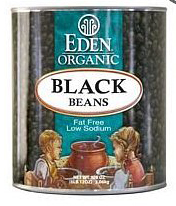
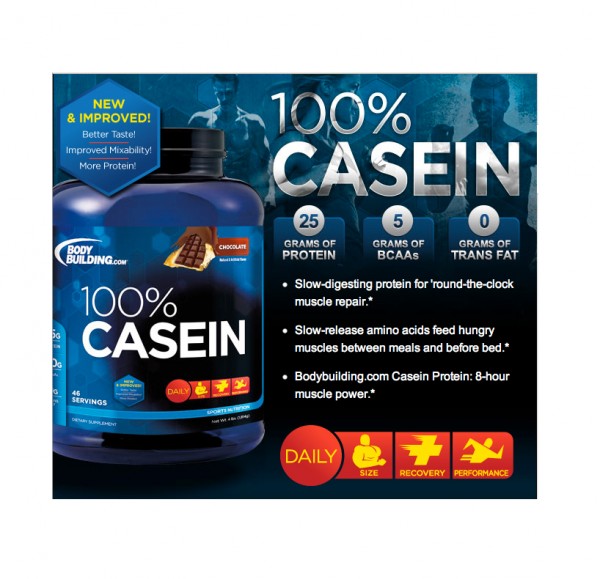
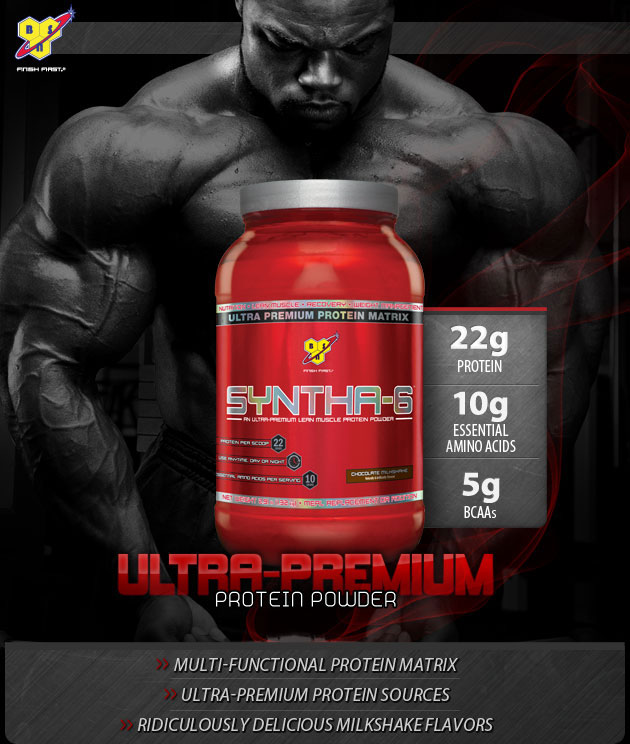
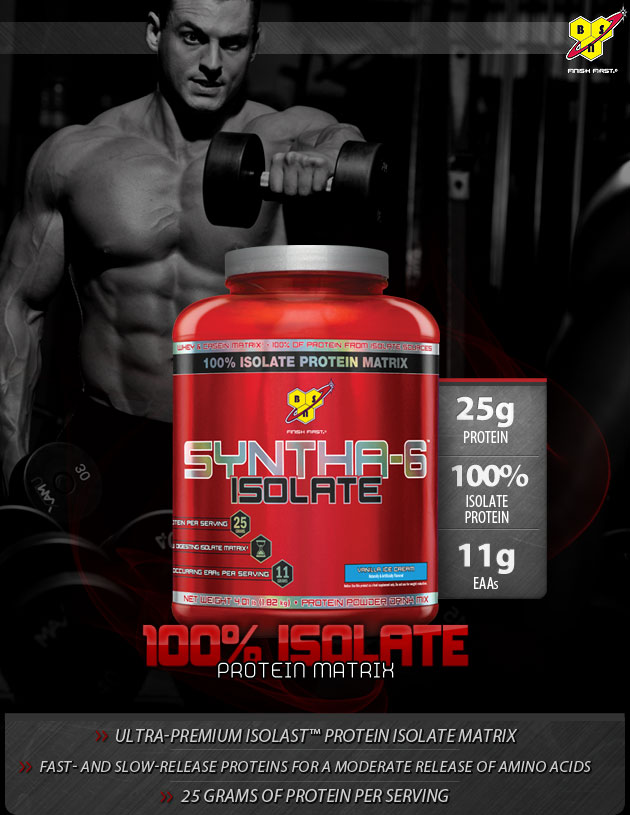
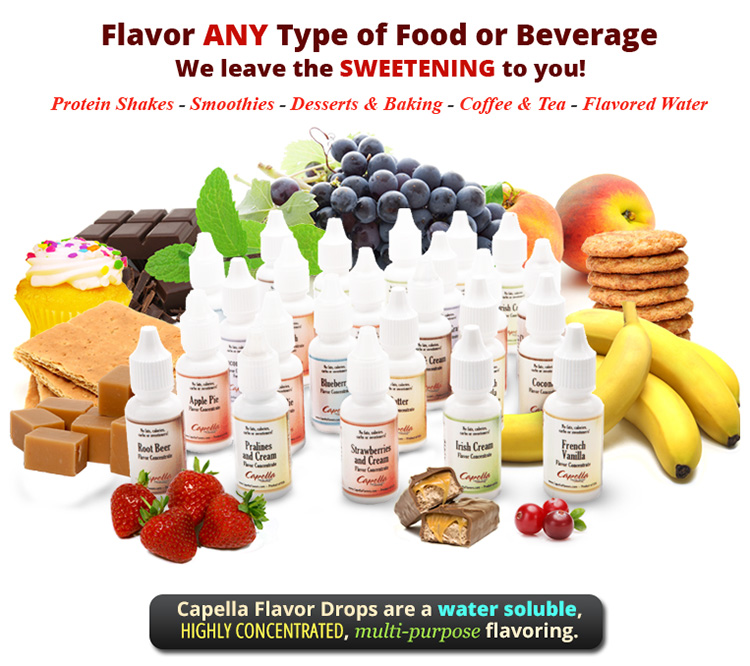
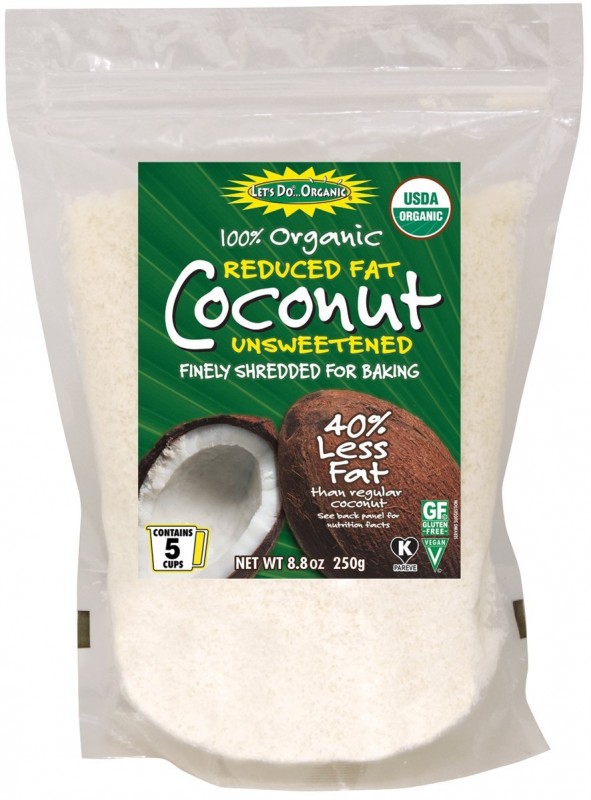
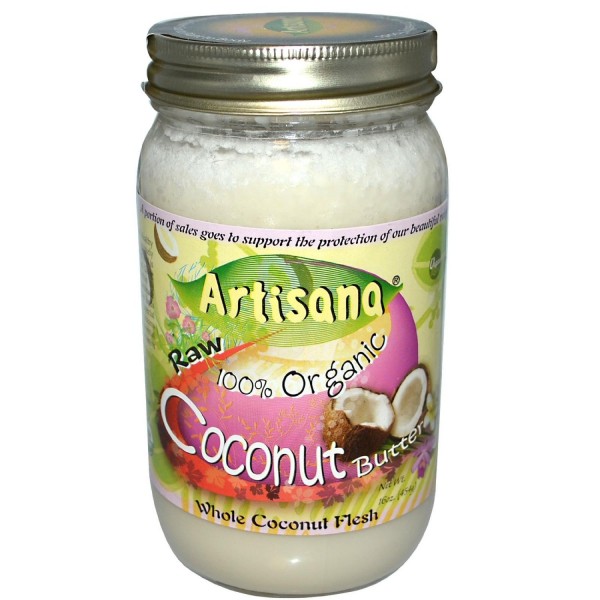
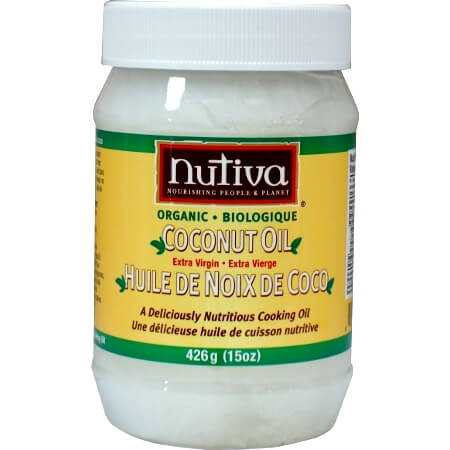
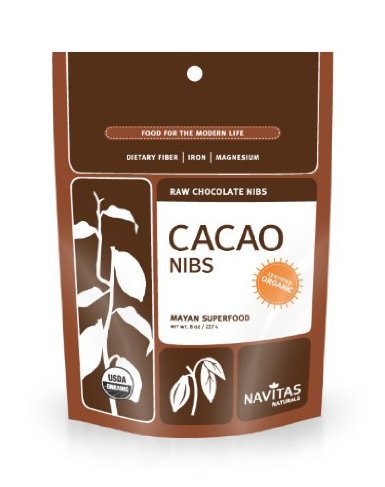
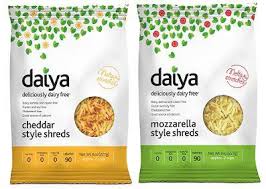
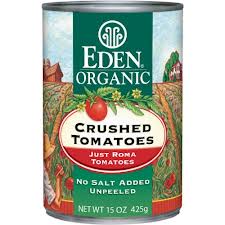
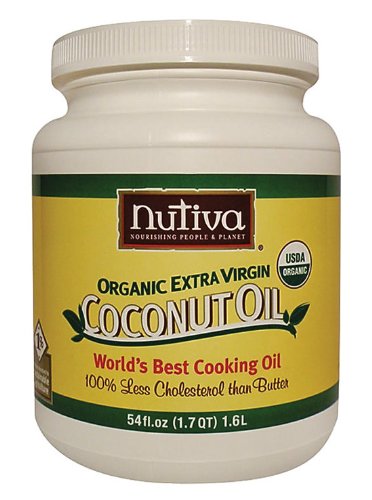
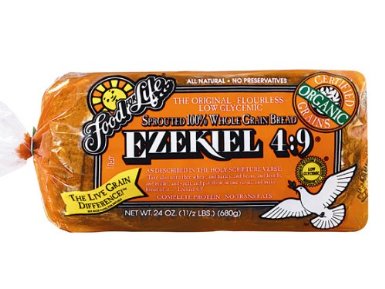
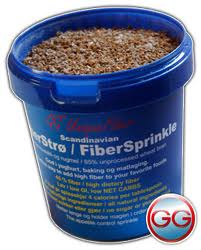
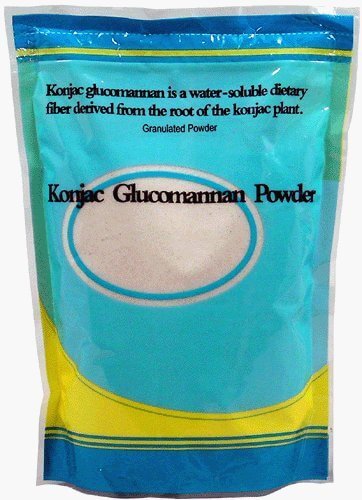
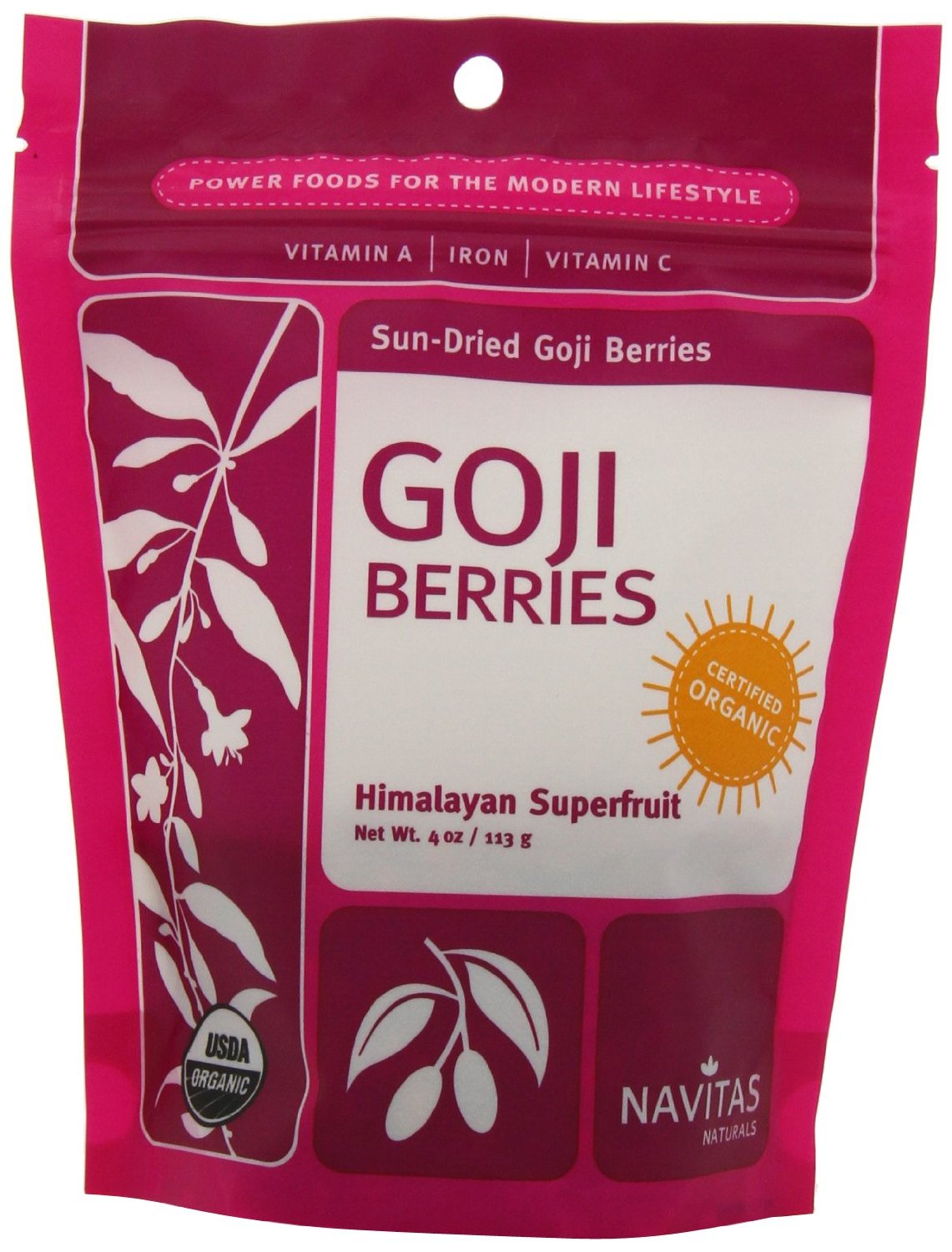
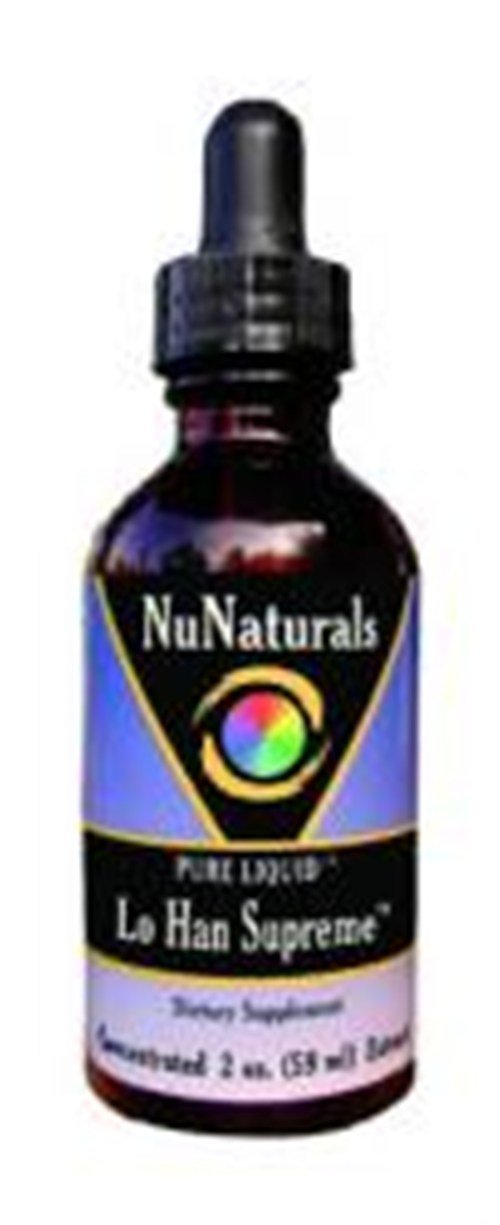
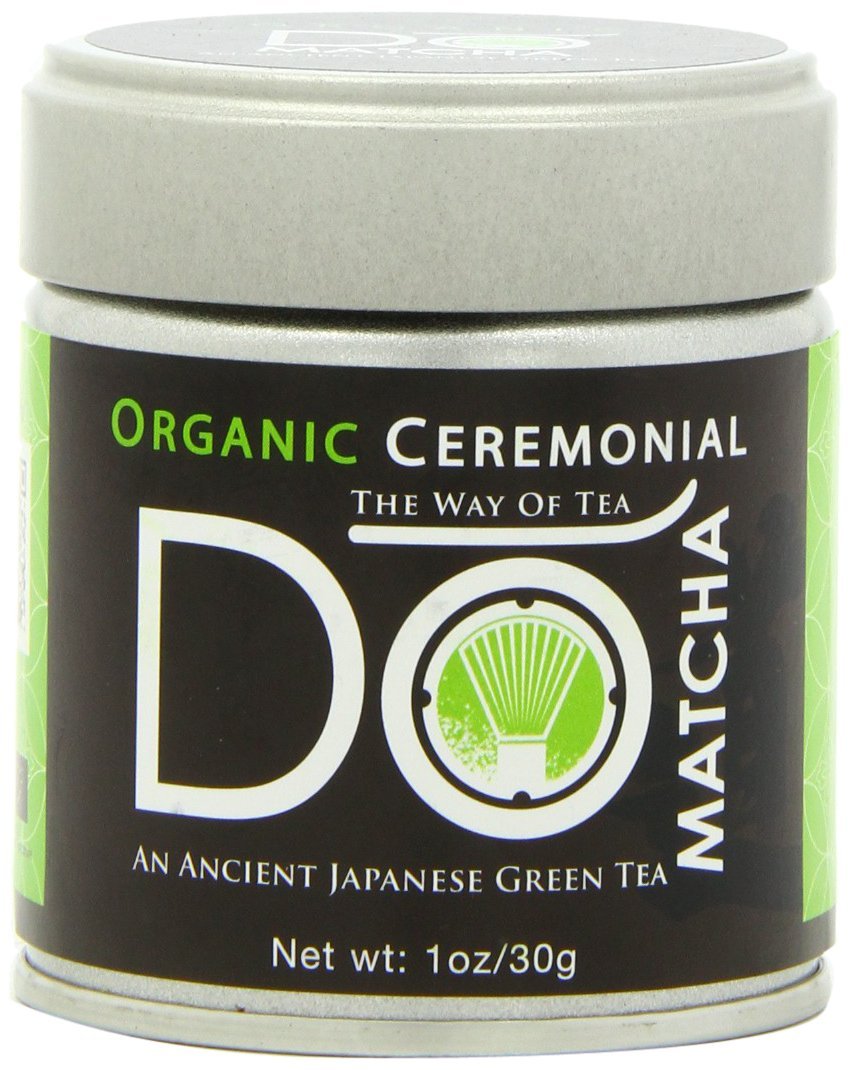
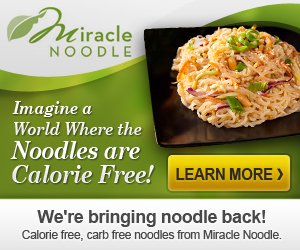

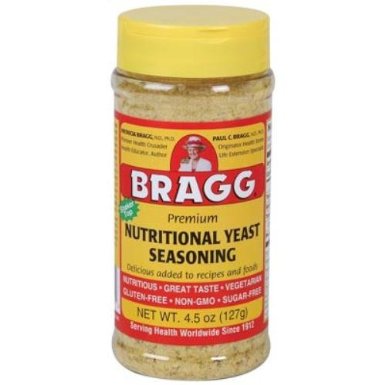
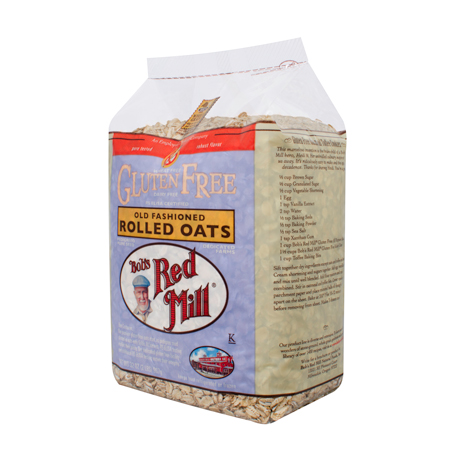
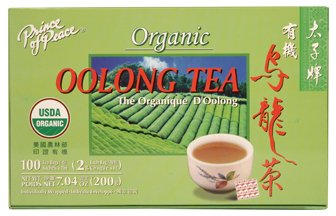
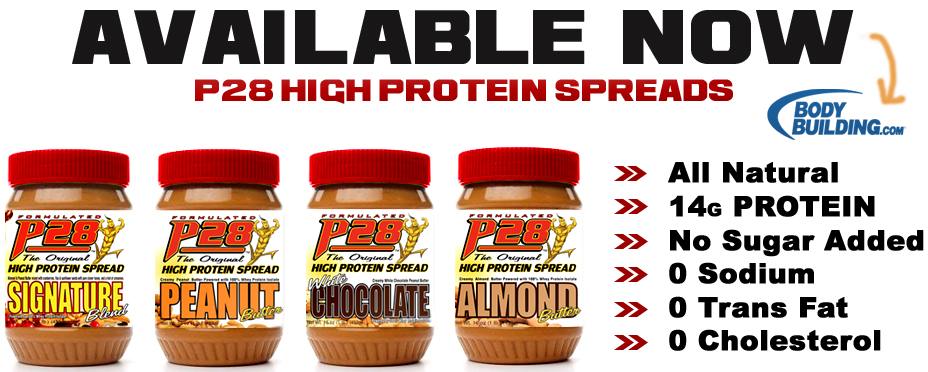
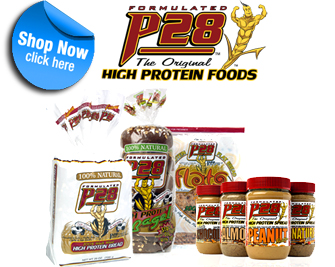
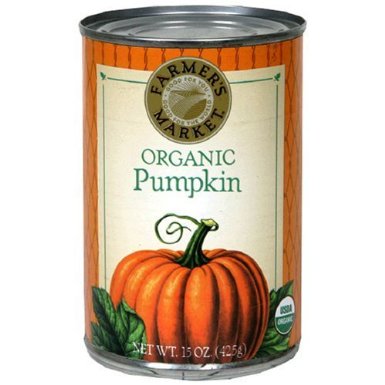


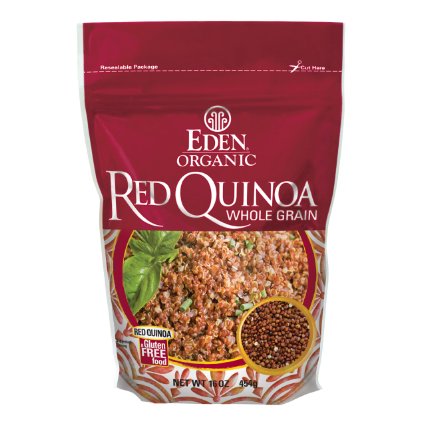
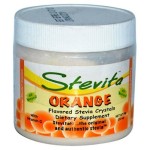
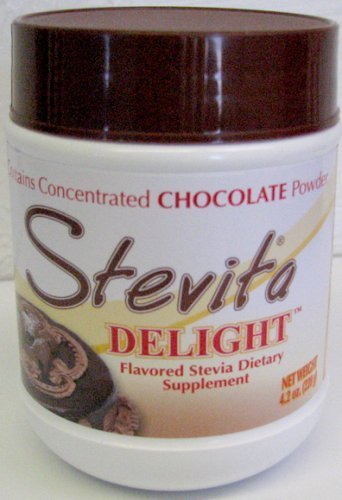
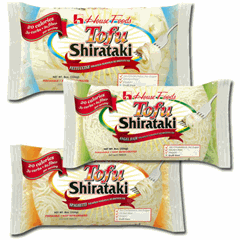
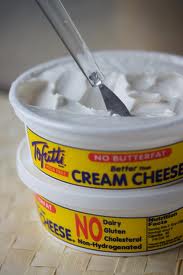
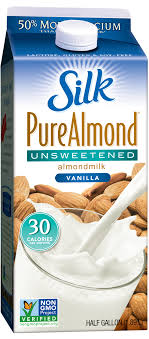
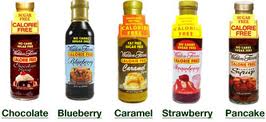

Mike Keenan
Great Blog!
Pingback: Chicken Alfredo Pizza | Dr. Sara Solomon
Pingback: Protein Ice Cream Crêpes | Dr. Sara Solomon
Pingback: Ice Cream Machine Tutorial | Dr. Sara Solomon
Bianca
Is Tofutti cream cheese similar in texture to cream cheese spread?
Pingback: Tiffany's Banana Bread | Dr. Sara Solomon
Pingback: Cheesy Garlic Cauliflower Breadsticks | Dr. Sara Solomon
Pingback: Low Carb Sushi | Dr. Sara Solomon
emily
Wow Sara thank you so much for all this information thats means alot for me thank you so much again:)